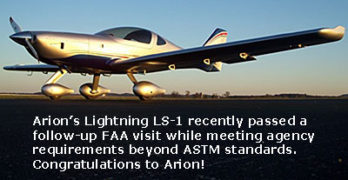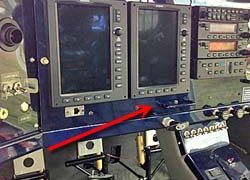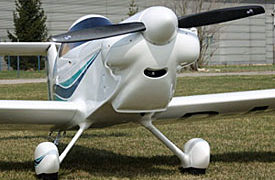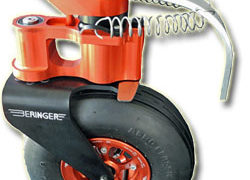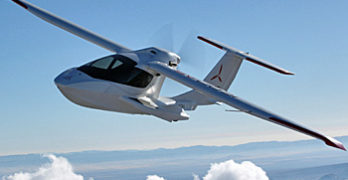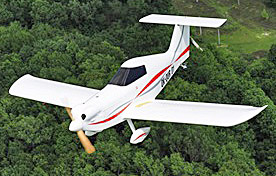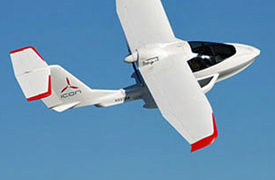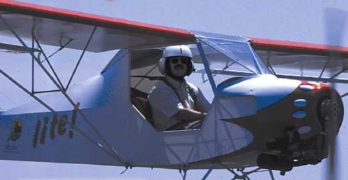In this post I’m going to do something potentially risky. I am going to make some statements about the politics of aircraft certification. While rather dull, this subject is nonetheless something pilots and others feel rather strongly about as the safety of aircraft — for persons in or under aircraft — is involved. Doesn’t everyone except a handful of thrill seekers care deeply about safety? I certainly do yet I feel it’s time for some new directions. I fully expect not everyone will agree, but I feel strongly that these statements need to be made. So, here goes …
My term as Membership Secretary of ASTM’s F37 LSA committee will complete later this year; I will be term limited out. That’s perfectly fine … I’ve done my duty for several years. ASTM’s F37 committee is the group that wrote and updates the standards used to gain acceptance for Light-Sport Aircraft. F37 is populated by some exceptional people that are largely unsung heroes for all the hard work they’ve done with little recognition.
Search Results for : CT AND hand control
Not finding exactly what you expected? Try our advanced search option.
Select a manufacturer to go straight to all our content about that manufacturer.
Select an aircraft model to go straight to all our content about that model.
Oshkosh 2013 Elements, Part 3: Slide-Out Panel
Elements are basic components of nature. As in our first two parts, I see Oshkosh Elements as worthy ideas other than airframes or engines. One such is World Aircraft Company‘s roller-bearing pull-out drawer instrument panel. Now, if you are like me and don’t spend a lot of time around your airplane with a wrench or soldering iron in your hands, you might not see why this is important. For panels with a collection of round instruments, maybe it isn’t as fetching an idea. Yet I’m willing to guess that nearly every mechanic who reads this or hears of World’s innovation is going to say, “Yes! Why hasn’t this been done before and why aren’t all instrument panels done this way?”
Early this year, I watched while two avionics mechanics maneuvered around the instrument panel in a Flight Design CTLSi. Their task was to install ADS-B hardware to coordinate with the dual-screen Dynon SkyView that fills left and right bays of the instrument panel.
SD-1 Minisport: the First SLSA Single Seater?
We looked at this airplane at AirVenture Oshkosh 2012 (video). At that time the Orem, Utah team presented their wood and composite airplane as a kit. In a year a lot changed and now SkyCraft is pushing ahead with plans for a Special LSA that will be delivered fully built for the modest price of $54,850. CEO Tyler Ives says the company is ready to declare compliance to ASTM standards and after they get a chance to prove that to FAA, the SD-1 Minisport might become the very first single seat Special Light-Sport Aircraft, a distinction that once earned will last forever. The only other candidate presently known is the Tecnam Snap aerobatic LSA. Given that Tecnam has achieved more LSA models than any other company, you should never count them out so the race is on to be the first-ever single seat SLSA.
Oshkosh 2013 Elements: Groundloop-Proof Tailwheel
Elements are basic components of nature. As in our first part, I see Oshkosh Elements as fascinating ideas other than airframes or engines. One such worthy idea is Beringer’s new anti-groundloop tailwheel. Before we talk about their innovation, though, let’s take a quick glance at tailwheel design popularity. Cub-like models and other taildraggers account for more than 20% of the LSA fleet today. Tricycle gear may dominate but lots of pilots believe a tailwheel aircraft is the “proper” gear for an airplane with more machismo, more bush-capability, more aerodynamic efficiency (less drag) … you name it, many pilots just love taildraggers. Tricycle gear pilots, however, not so much. The reason? Trigear landings tend to self correct regarding keeping the airplane straight on the runway. Tailwheel aircraft threaten the dreaded ground loop. Since this sounds — and can be — scary, lots of Cessna or Piper-trained pilots avoid flying taildraggers.
Several other reporters covered Beringer‘s press conference and reported on the company’s tailwheel offering but none fully explained it, in my opinion.
Icon Aircraft Reports Being Fully Funded
First Icon Aircraft wowed aviation enthusiasts with its sleek and uniquely featured amphibious A5 LSA seaplane. Over the years the company reported collecting around 1,000 orders, a success story that even beats Cessna’s Skycatcher. However, several years passed and the company did not enter production, although they reported a deal with Cirrus Aircraft to handle some fabrication duties. Perhaps all that changed now. The Southern California company announced that it raised its fourth and final round of funding totaling over $60 million. They’ll use the funds to “complete production preparations, demonstrate regulatory compliance, [and] ramp up full-scale aircraft production.”
CEO and Founder of Icon Kirk Hawkins said, “For the first time in Icon’s history, the company’s future is no longer reliant on the whims of the capital markets, which have been highly unstable over the last five years.” He identified that the new financing effort was led by a “multibillion-dollar conglomerate” strategic investor from China.
End of May 2013 LSA News Wrap
Single Seat Darling — Perhaps it’s because we haven’t had so many new SLSA offerings lately (though don’t look away too long as more are definitely on the way!). Maybe it’s because the new airplane is a single seater. Certainly we have not had many single seater SLSA … well, none so far, but that, too, is going to change with the Snap aerobatic aircraft and the electric-powered Yuneec eSpyder working on SLSA approval as one-place airplanes. It could be the low price tag. No question that a price under $60,000 for a ready-to-fly Special LSA is attractive. However, I’m always amazed at conventional aviation magazines droning on about the “high cost” of LSA when, in fact, we have many aircraft offered at below $100,000, several below $80,000, and a handful for even less the new SD-1 Minisport (and the other low-priced LSA are all two seaters).
Light Aircraft Weight … More or Less?
Several aviation sources recently carried news about Icon Aircraft and their A5 LSA seaplane development. Icon Aircraft has been waiting — surely with increasing impatience — for FAA to answer their formal request for exemption to the Light-Sport Aircraft gross weight parameter. FAA normally replies in 120 days, however, more than a year passed and all that arrived was a request for more detail. One can imagine the cries of angst at Icon. Many have wondered when (or if) this handsome aircraft will go to market but if you were part of their leadership, what would you go into production with … a 1,430-pound seaplane or one at the new requested weight of 1,680 pounds? Either way, what if FAA later changed their mind about an exemption they might grant. Recent news about the IRS makes us all aware government agencies don’t always operate as we expect. What a vexing situation for Team Icon.
UltraCub (Belite)
[UPDATE — fall 2009: This article about the Kitfox Lite refers to a company now several years out of business. The new Kitfox producer sold the Kitfox Lite design to Kansas entrepreneur, James Wiebe. His company, Belite Aircraft, now produces the Belite Carbon 254 (and other variations) and has significantly changed structure with carbon fiber components to lighten the weight, assuring that it meets Part 103. For the latest info on their offerings, contact the company directly.
Information in this article, while similar to what Belite Aircraft produces today, will not be identical to the new model. –Dan]
Kitfox Lite: tastes great; less filling One the best-selling kit-built aircraft of all time is the Kitfox series. First designed by Dan Denney for a company bearing his name, the airplane is now marketed in several variations by SkyStar. As ownership passed, the market matured and SkyStar astutely chose to widen the appeal of the well-known Kitfox name.
Part 103 Carbon 254
[UPDATE — fall 2009: This article about the Kitfox Lite refers to a company now several years out of business. The new Kitfox producer sold the Kitfox Lite design to Kansas entrepreneur, James Wiebe. His company, Belite Aircraft, now produces the Belite Carbon 254 (and other variations) and has significantly changed structure with carbon fiber components to lighten the weight, assuring that it meets Part 103. For the latest info on their offerings, contact the company directly.
Information in this article, while similar to what Belite Aircraft produces today, will not be identical to the new model. –Dan]
While it may have been a long time coming, SkyStar Aircraft – the builder of the extremely popular Kitfox series – has done their Kitfox Lite version right. It was easily worth the wait.
While the Kitfox Lite and Avid Aircraft’s Champion were both flying regularly last summer, SkyStar elected not to have the plane flown for an Ultralight Flying!
Garmin’s Radios Add Technology to Cockpits
Technology and radios seem to be obvious partners, don’t they? In the old days of a few round dials to help a pilot operate his flying machine, the comm radio was perhaps the highest technology to enter the cockpit. Radios continued to improve over the years but much of the innovation was seen in the faceplate or occurred in transceiver functions. We did get digital readouts and flip-flop frequency change options, but otherwise radio have seemed rather static … frozen in time, while GPS, moving maps, EFISs, EMSs, PFDs, MFDs, and more swept past with wave after wave of innovation. Compared to Dynon’s SkyView or Garmin’s 796, radios were looking long in the tooth.
Thanks to recent announcements from top LSA radio supplier, Garmin, the radio product line is changing. The ubiquitous SL30 and SL40 that kept Sport Pilots talking to control towers have been favorite panel friends to many a Sport Pilot.
- « Previous Page
- 1
- …
- 33
- 34
- 35
- 36
- 37
- …
- 62
- Next Page »


